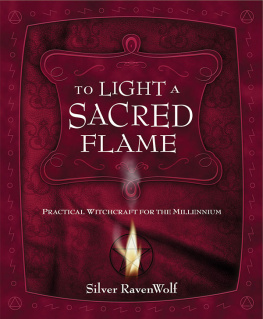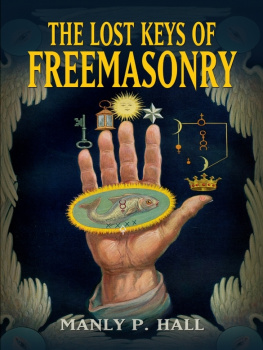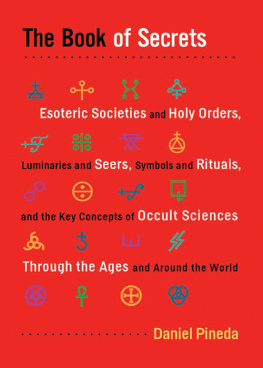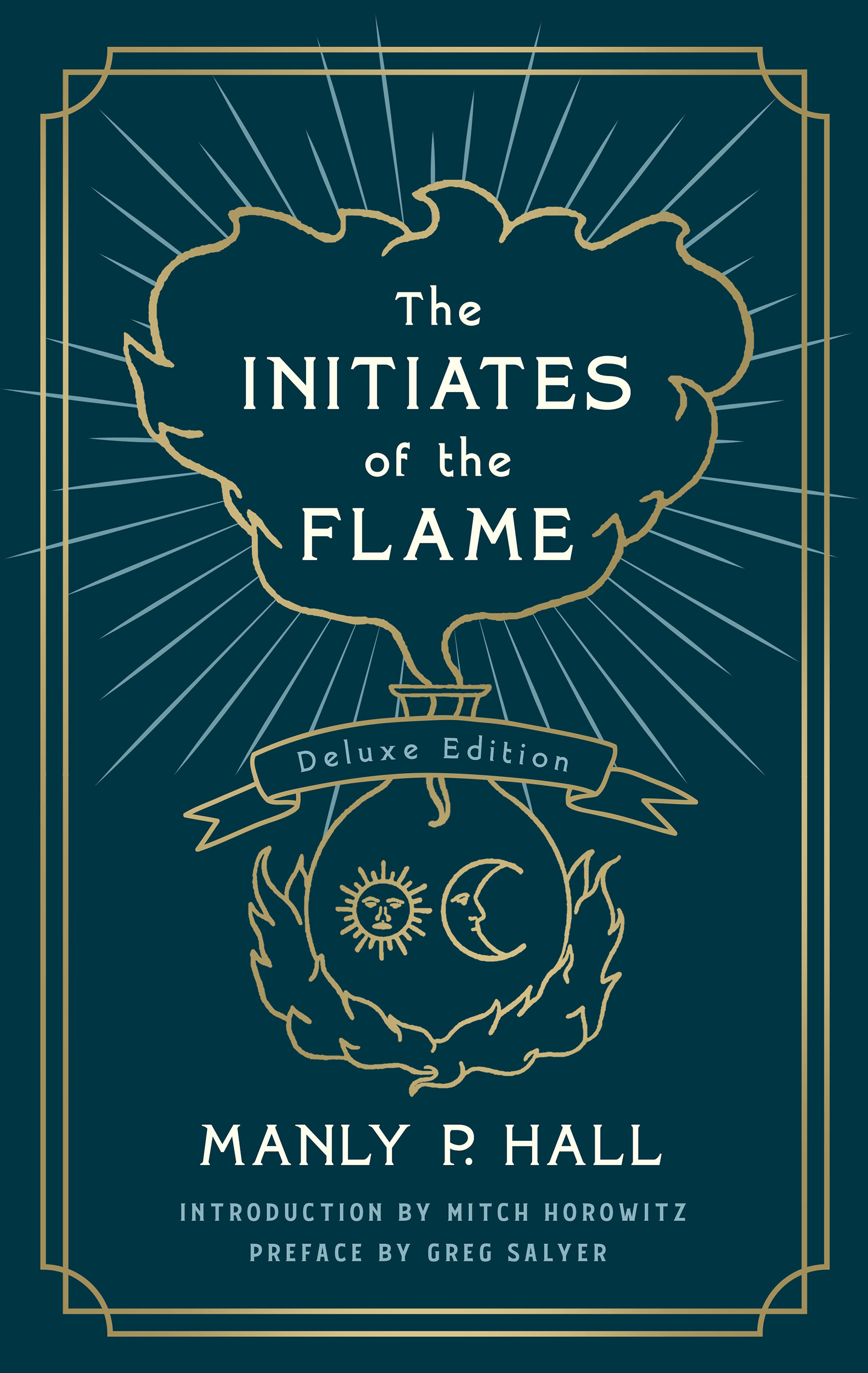Contents
Guide
Pagebreaks of the print version

The author and publisher have provided this e-book to you for your personal use only. You may not make this e-book publicly available in any way. Copyright infringement is against the law. If you believe the copy of this e-book you are reading infringes on the authors copyright, please notify the publisher at: us.macmillanusa.com/piracy.
He who lives the Life shall know the Doctrine
You can see it already in his first publication in 1922Manly P. Halls passion for the flame. It is a passion tempered by reading and research that is both broad and deep, and it transcends narrow sectarianism and dogma to reach for the true flame, which is that great fire which is the spirit of God. In fact, as the subtitle indicates, doctrine and dogma are after the fact and not in the moment; cold statements rather than burning flames, descriptive only to those who have passed through the flame: He who lives the Life shall know the Doctrine. You live then know, not the other way around. Like the Tao or the Sublime, the Doctrine of the Flame is larger than life but not separate from it.
Mr. Halls first work contains both grief and glory as he mourns the loss of the flame in the worlds great cultures where it once burned brightly: As we think of the nations that are past, of Greece and Rome and the grandeur that was Egypts, we sigh as we recall the story of their fall; and we watch the nations of today, not knowing which will be the next to draw its shroud around itself and join that great ghostly file of peoples that are dead, and as he celebrates those who have gloriously kept the flame alive: Few realize that even at the present stage of civilization in this world, there are souls who, like the priests of the ancient temples, walk the earth and watch and guard the sacred fires that burn upon the altar of humanity. Purified ones they are, who have renounced the life of this sphere in order to guard and protect the Flame, that spiritual principle in man, now hidden beneath the ruins of his fallen temple. Should we happen to see it in this early work, we can forgive Manly Hall any fulsomeness for the flame, any doggedness about the need for tending it, and any anthemic declamations as he traces it through the ages and across cultures. He wasafter allonly twenty-one.
By the time he was twenty-seven, Manly Palmer Hall of Ontario, Canada and Los Angeles, California (by way of Wall Street) would produce the worlds greatest esoteric text, The Secret Teachings of All Ages, and we can, of course, see the outlines of it here in his pursuit of the flame. Initiates, however, stands on its own as a century-old beacon that lights a way that is both simple and difficultsimple because truth is not abstract but embodied in life itself, difficult because our way to it is cluttered with spectacle and ruins. So many of our meaning-making institutions (governments, religions, schools, etc.) sell themselves short by investing in symbols rather than the symbolized. Like the old Buddhist parable in the Lankavatara Sutra about a teachers finger pointing at the moon and his students focusing only on the finger, instead of the moon, institutions by their nature focus on the maintaining of static creeds, doctrines, symbols, and truths rather than tending the dynamic flame to which all these elements point. By twenty-one Manly P. Hall had seen the moon, and Initiates is his first attempt at pointing to it.
His pointing is not limited to words; rather, the multimedia nature of the work reflects Manly Halls appreciation of art as its own path and as one that supplements and even supersedes words. I do not know how many academic books published in 1922 included images, but I am sure some did. I doubt, however, that many used images that enhanced the text as much as Initiates did, and even fewer of those would have images drawn by the author. A century later, here we are in a world mediated by images like never before, and Initiates seems prescient in form as well as content. Manly Halls line drawings have the elegance of minimalism with an esoteric depth that he elucidates throughout the text. Twenty-first century readers will be delighted by the simple synergy between these two forms in this work.
Finally, the Philosophical Research Society is proud to have Lecturer-in-Residence Mitch Horowitz edit this new edition of Manly Halls work. Mitch is intimately familiar with Mr. Halls oeuvre, and he curates it with both the respect that Mr. Hall deserves and the historical contextualization that Mr. Hall would have admired. The Philosophical Research Society is honored to partner with Mitch and St. Martins Press to present a seminal work for its time and ours, and in offering it to you, dear reader, we honor your own search for the flame.
Greg Salyer, Ph.D.
President/CEO
Philosophical Research Society
December 31, 2020
The Initiates of the Flame is not only Manly P. Halls literary debut but it is also a framing of the teachers philosophical approach to life, set down at an early, intellectually powerful, and even gestational phaseyet consistently held to throughout his career. Within symbol, the budding sage wrote, you discover not only an image of yourself but the continuum between your psyche and the cosmos. As above, so below, as the Hermetic dictum goes.
Published in 1922, when Hall was just twenty-one years old, The Initiates of the Flame was, effectively, the teachers earliest public statementappearing six years before The Secret Teachings of All Agesand it heralded the arrival of the preeminent voice of esoteric inquiry of the new century.
The young scholar was a curator as much as a philosopher, and maybe more so. He brilliantly imbibed esoteric tradition, often Western but sometimes Eastern, and reinterpreted it for modern readersand for himself. The Initiates of the Flame is a codex of symbolism, ethics, eternal needs, and the search for truth.
The period in which Hall wrote this book resembled our own. The United Statesthe Canadian-born youths adopted homehad just emerged from a worldwide pandemic experienced in 1918 at the grinding end to World War I. Economically, politically, and culturally the world was marked by uncertainty, decline of old empires, mass migration, and rising nationalism. The last of those factors raged on despite the horrific events wrought by nationalism in the just-ended warand nationalist passions on an unprecedented scale would soon engulf the world again. Intermixed with all this was a sense of individual possibility and of a future that could appear exciting, unsettled, and wide open.
Into this world, Manly P. Hall hoped to reintroduce symbolical philosophyand specifically the ideal that our lives could be understood as mirroring a cosmic order that extends to the ultimate source of creation, to which the individual could, in initiatory phases, grow ever-closer. Within humanitys ancient symbolssuch as the all-seeing eye, the crucifix, the flame of wisdom, the sword and stone, the grail of knowledge, the pyramidHall detected the code of eternal life and its response to the private needs of the individual.
Historically, The Initiates of the Flame has had two distinct prior livesthis edition is its third. As noted, Hall published his concise, evocative volume in 1922, six years before his Great Book,










